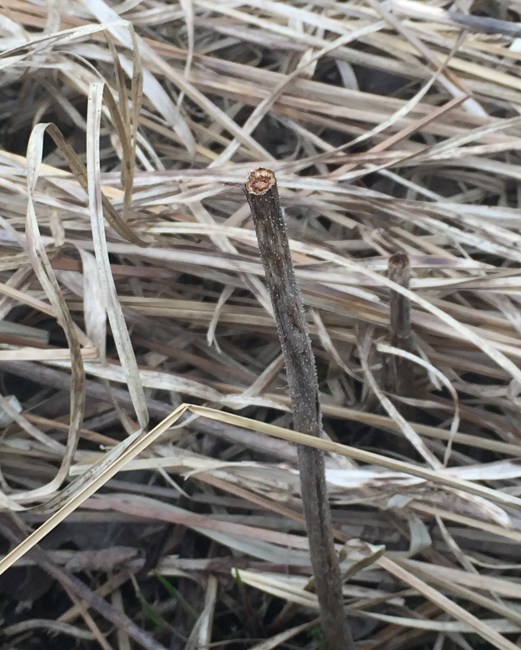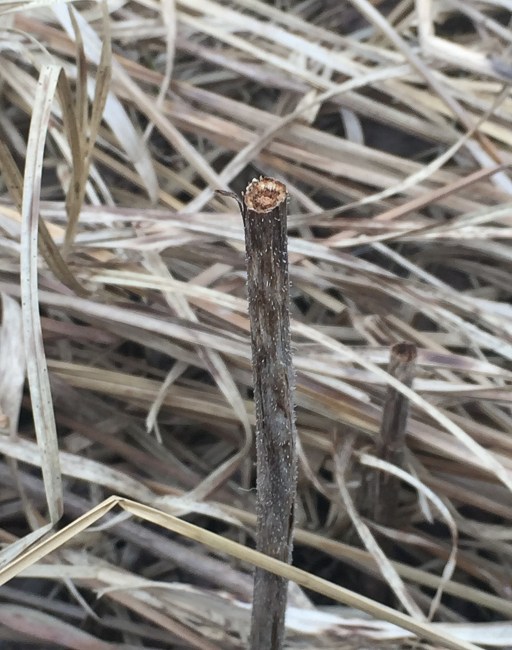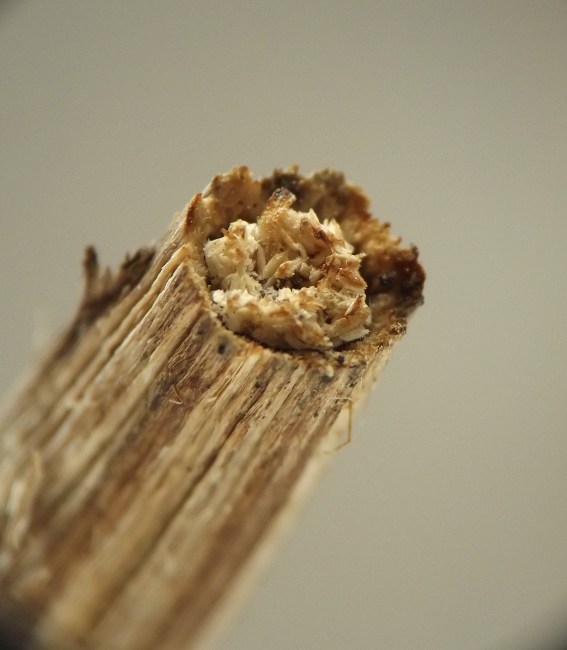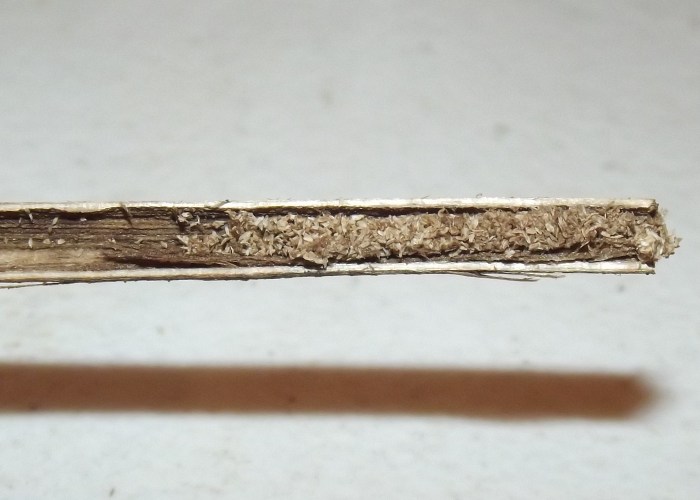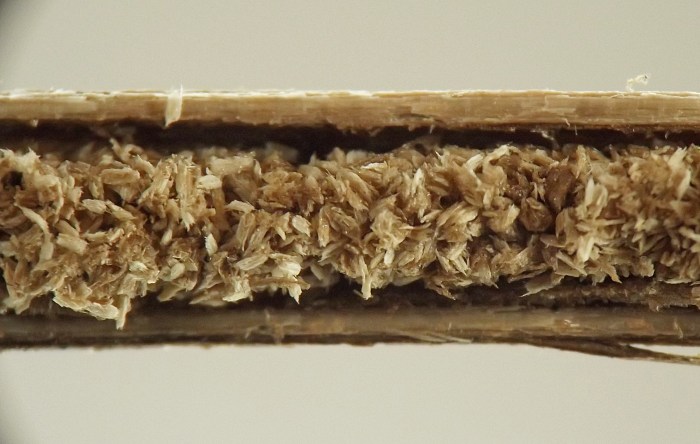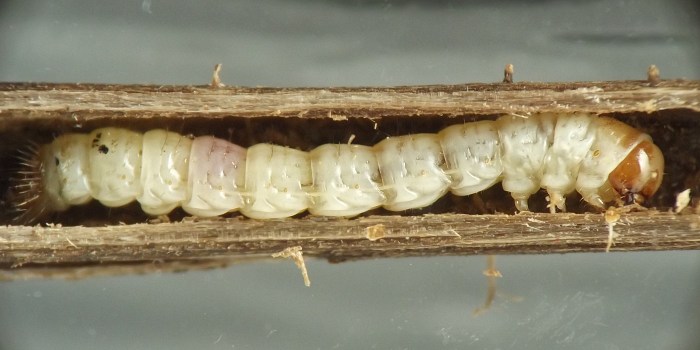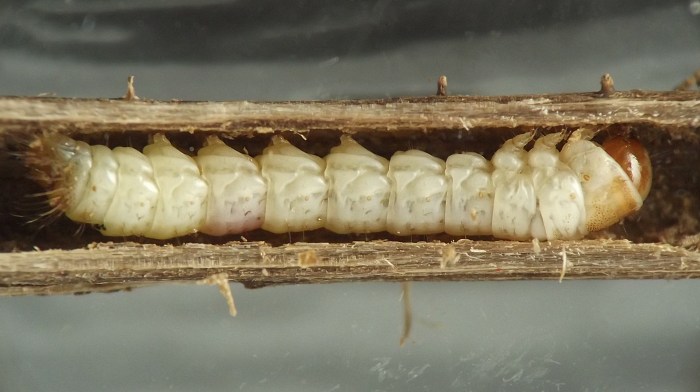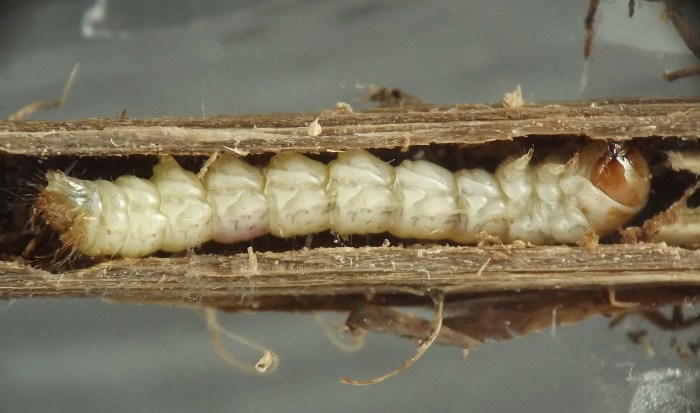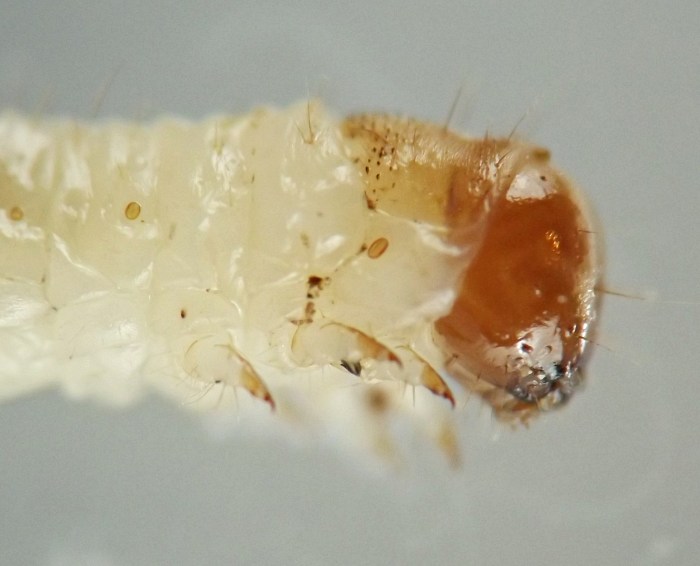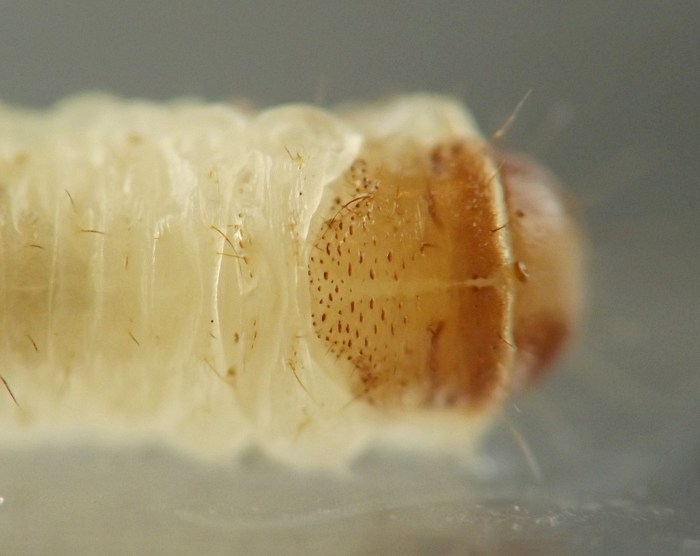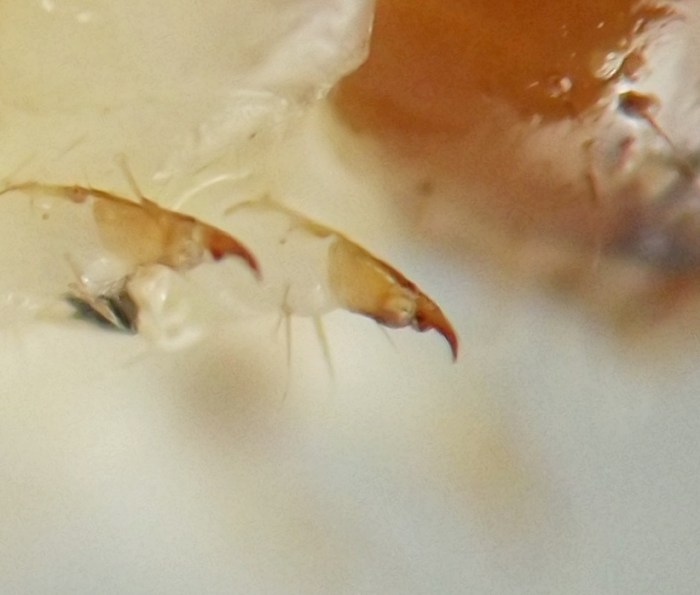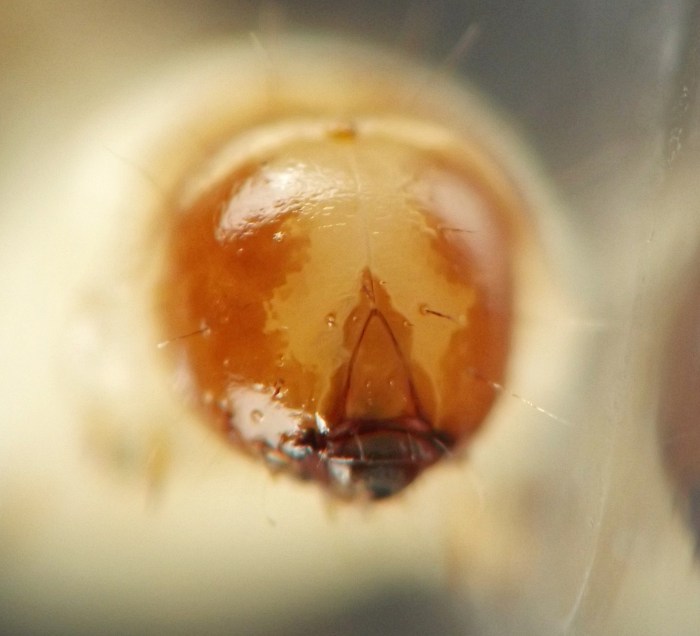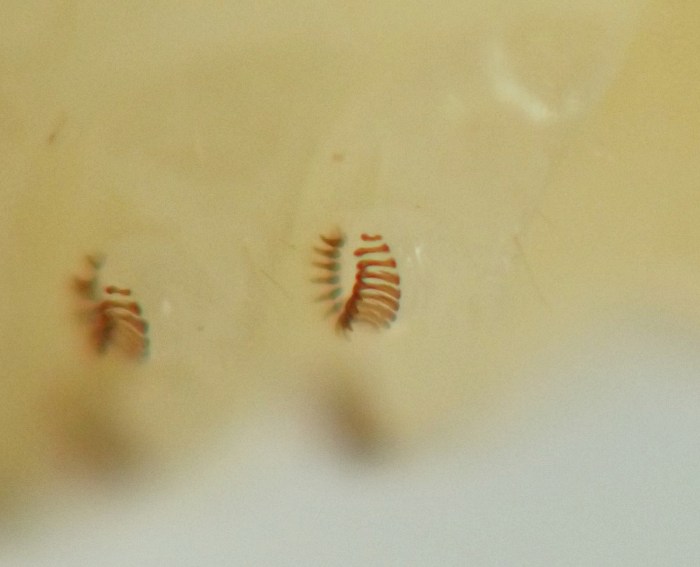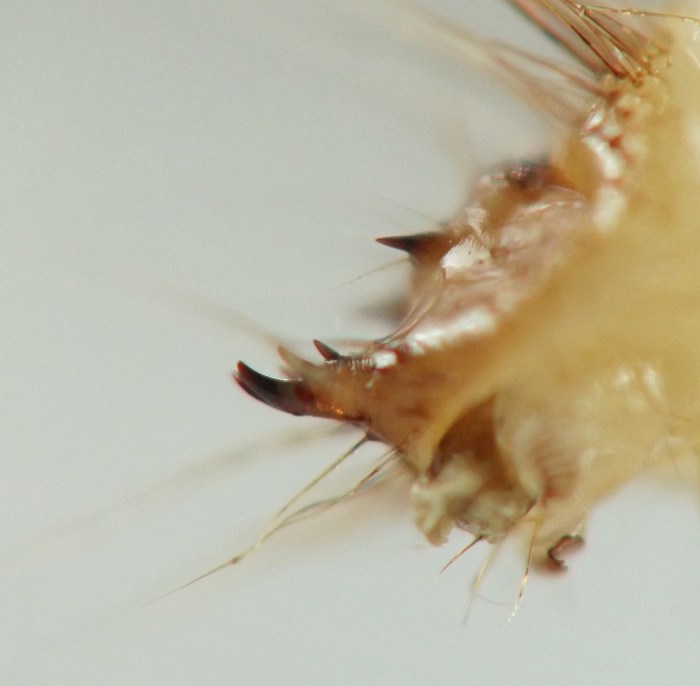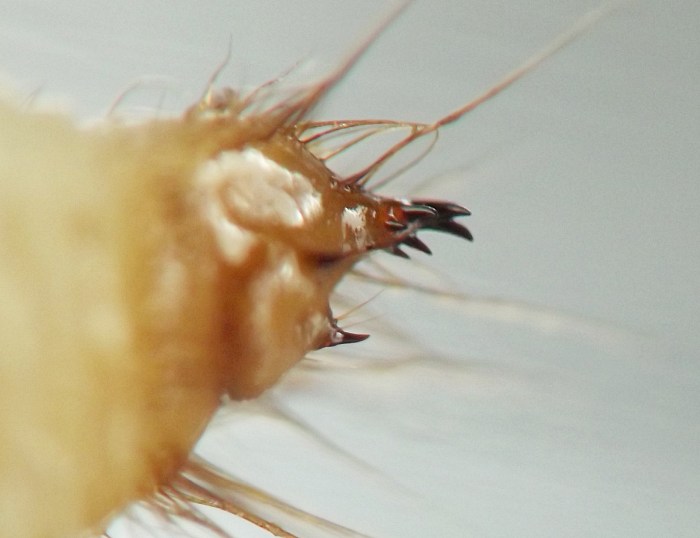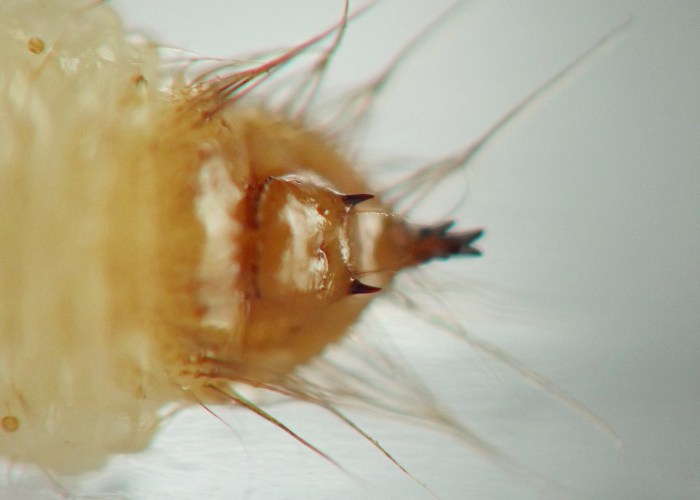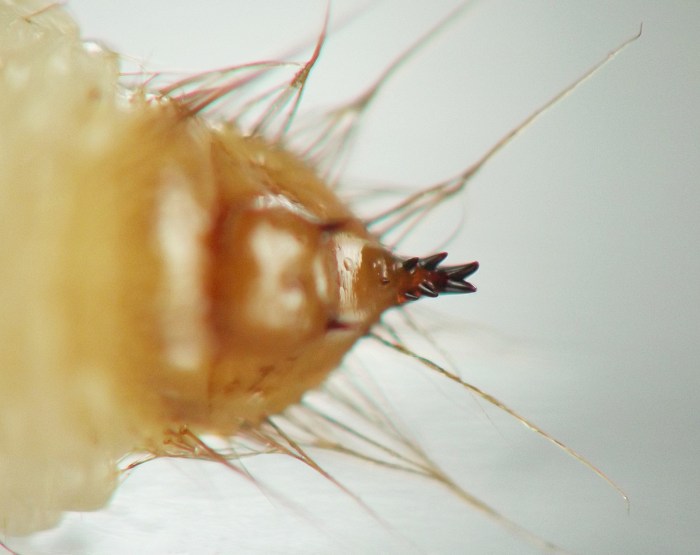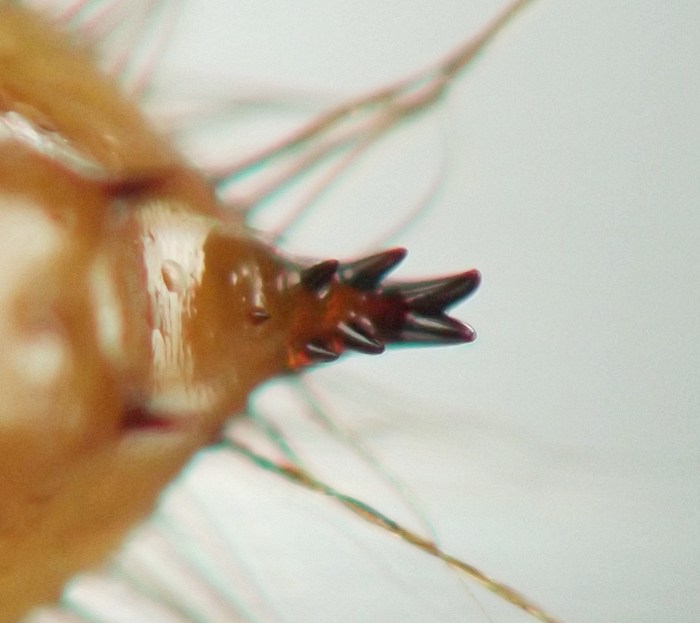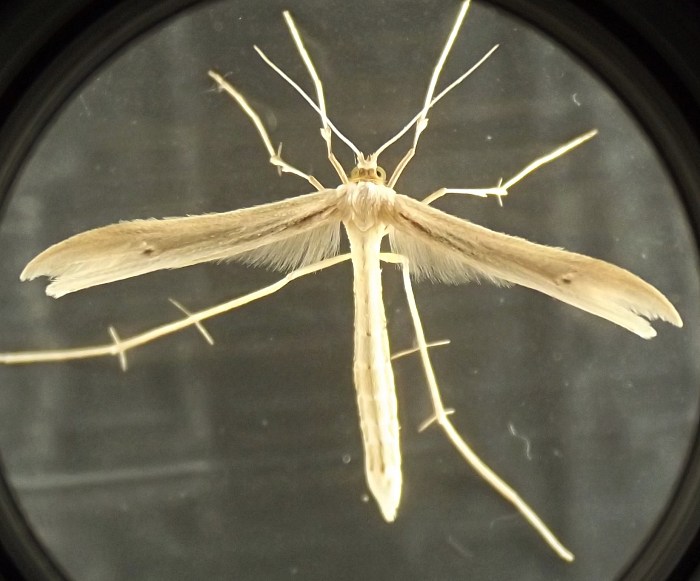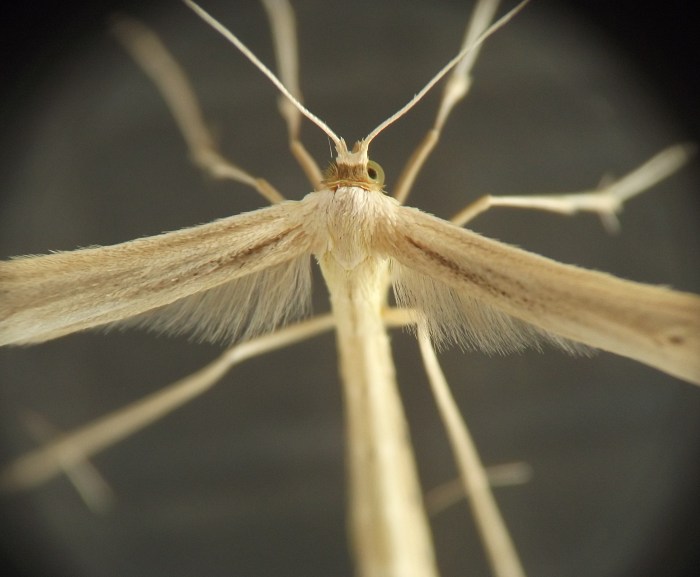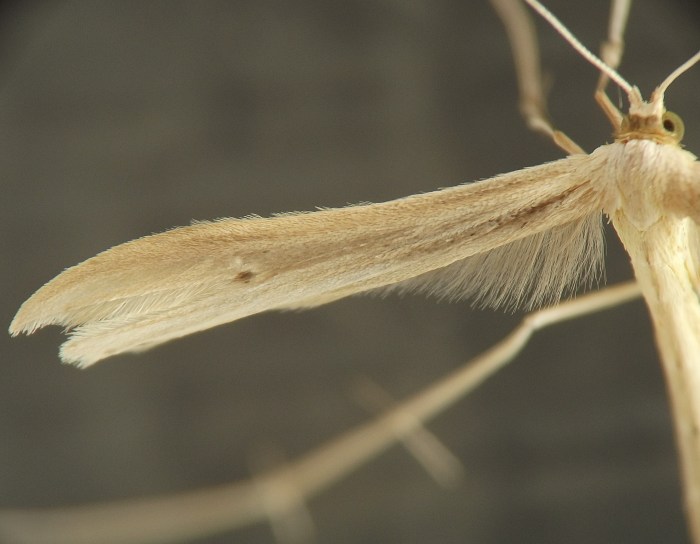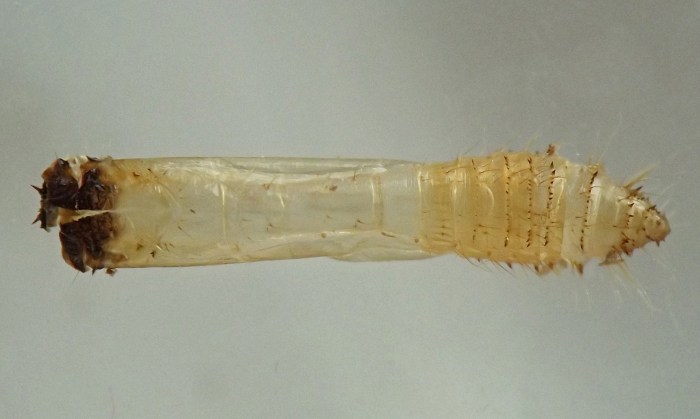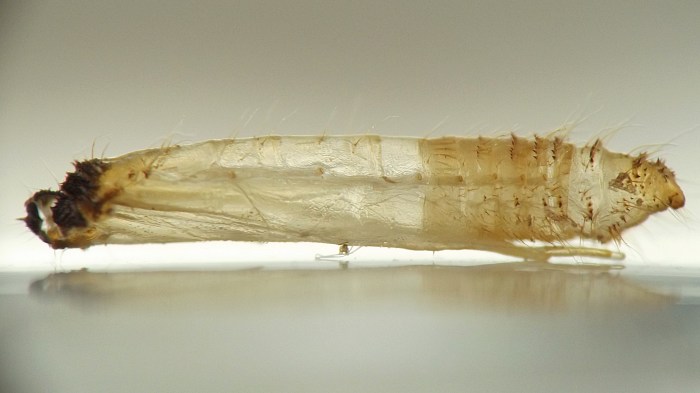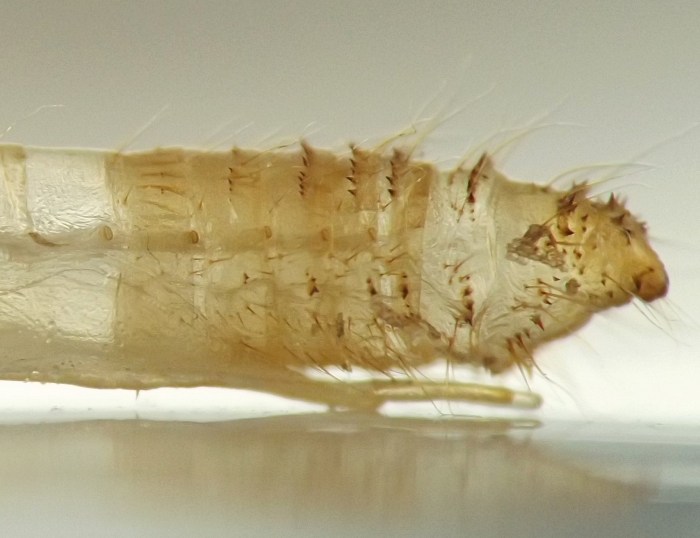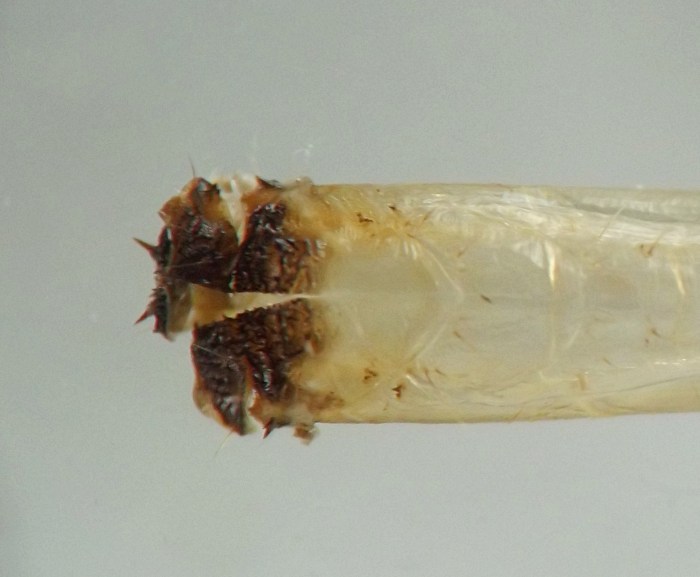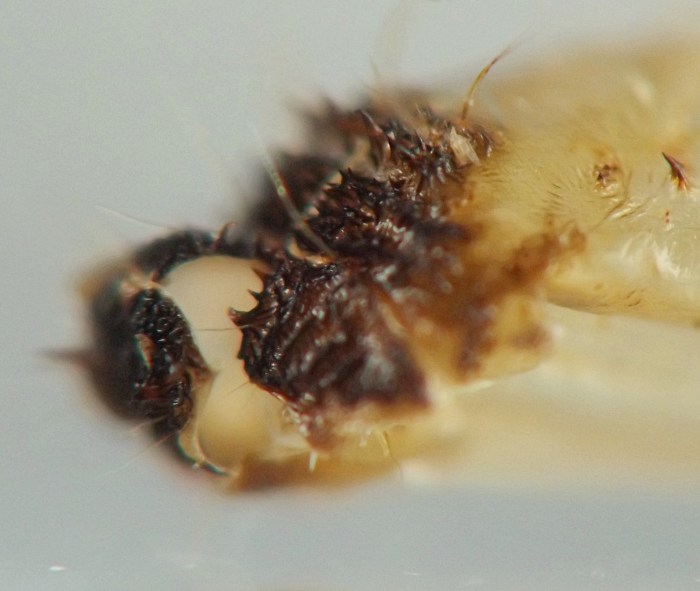Stem borer (Lepidoptera: Pterophoridae) in Symphyotrichum [0559]
| Order | Lepidoptera |
|---|---|
| Family | Pterophoridae[T,L,P,A] |
| Lower taxon | Hellinsia sp. |
| No. spp. involved | One confirmed |
| Feeding mode | Stem borer |
| Host plant | Undetermined large wetland Symphyotrichum (either S. puniceum or S. novae-angliae) (Asteraceae) |
In the late summer or fall, mature larvae of this stem borer cut around the circumference of the stem from the inside at a point approximately 10-30 cm above ground level, causing the upper part of the plant to break off and leaving behind a lower stem "stump" with the larva still inside. The open end of the stump is plugged with frass, and the larva passes the winter in the stump. In spring, probably while still a larva right before pupation, the insect removes the frass cap in the top of the stump, making way for the eventual emergence of the adult moth. Pupation occurs in the stump. The pupa is elongate, with short spines on the posterior half and a flattened, heavily sclerotized, spiny anterior end. The adult moth emerges from the split-open anterior end of the pupal skin and evidently crawls out of the open top of the stump before its wings expand and harden. An adult was reared in spring 2023.
In November 2024, a freshly formed Symphyotrichum stem stump tentatively ascribed to Hellinsia sp. was located in the author's yard. The host plant was a weedy aster species, about 65 cm tall with a bushy, branching growth form and numerous stems arising from the belowground parts. The plant had long since gone to seed and senesced and it was not identified to species, but one of the most common asters at this location, having a similar growth form to the plant in question, was awl aster, Symphyotrichum pilosum. Similar stumps only a few feet away were formed in the stems of a weedy goldenrod, Solidago sp., probably by the same species of insect.
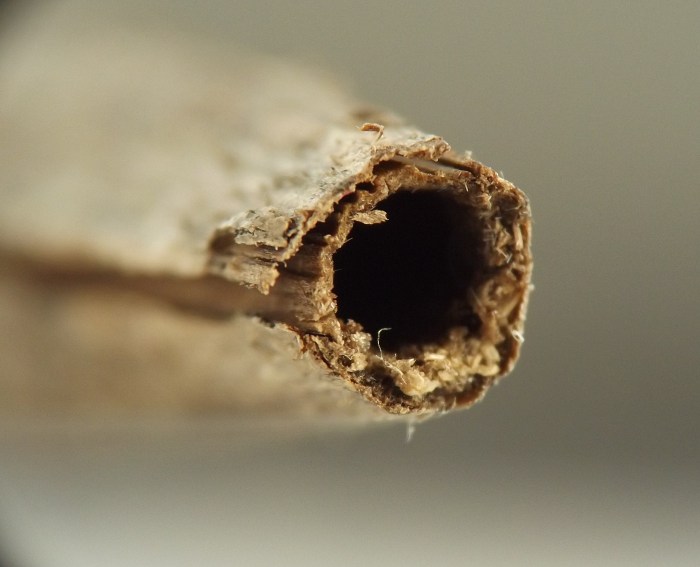
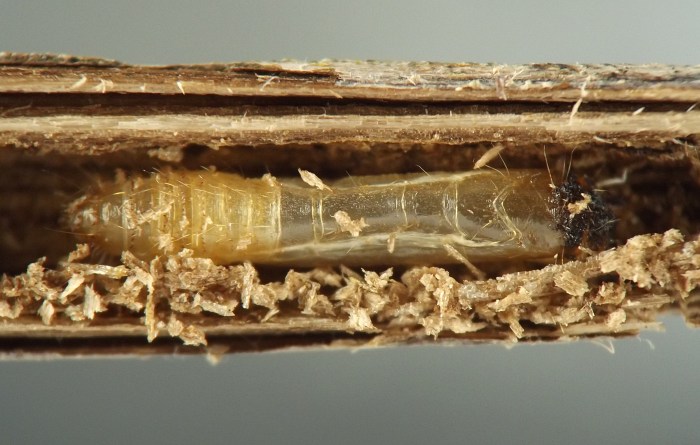
Specimen data for images
Coll. 04/14/23, photos of larvae and plant damage taken on 04/14/23-04/15/23 (01-23), adult em. 05/09/23, photos of adult and exuviae on 05/10/23 (24-33).
References
[none]
Page created 11/30/23. Last update: 11/28/24
